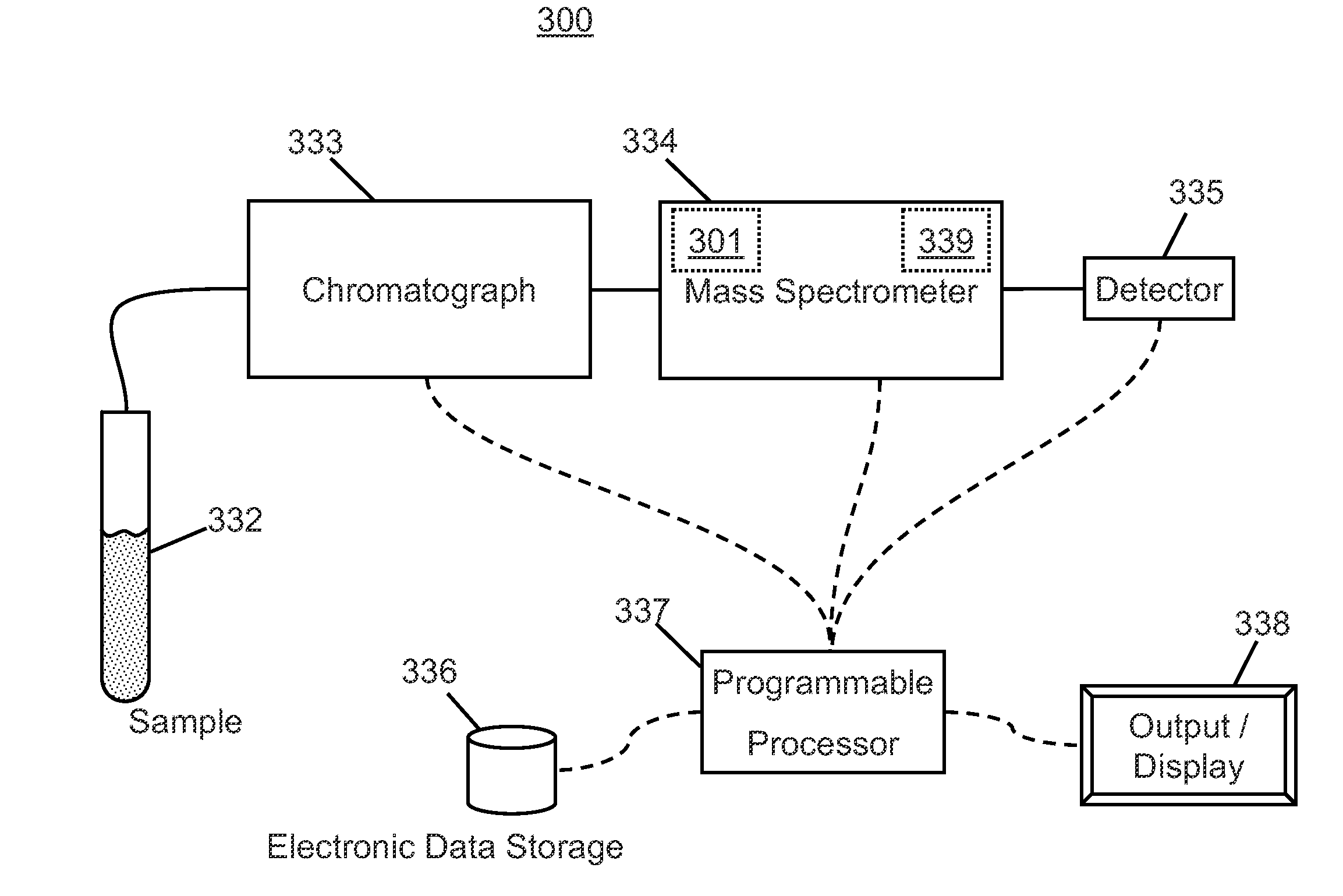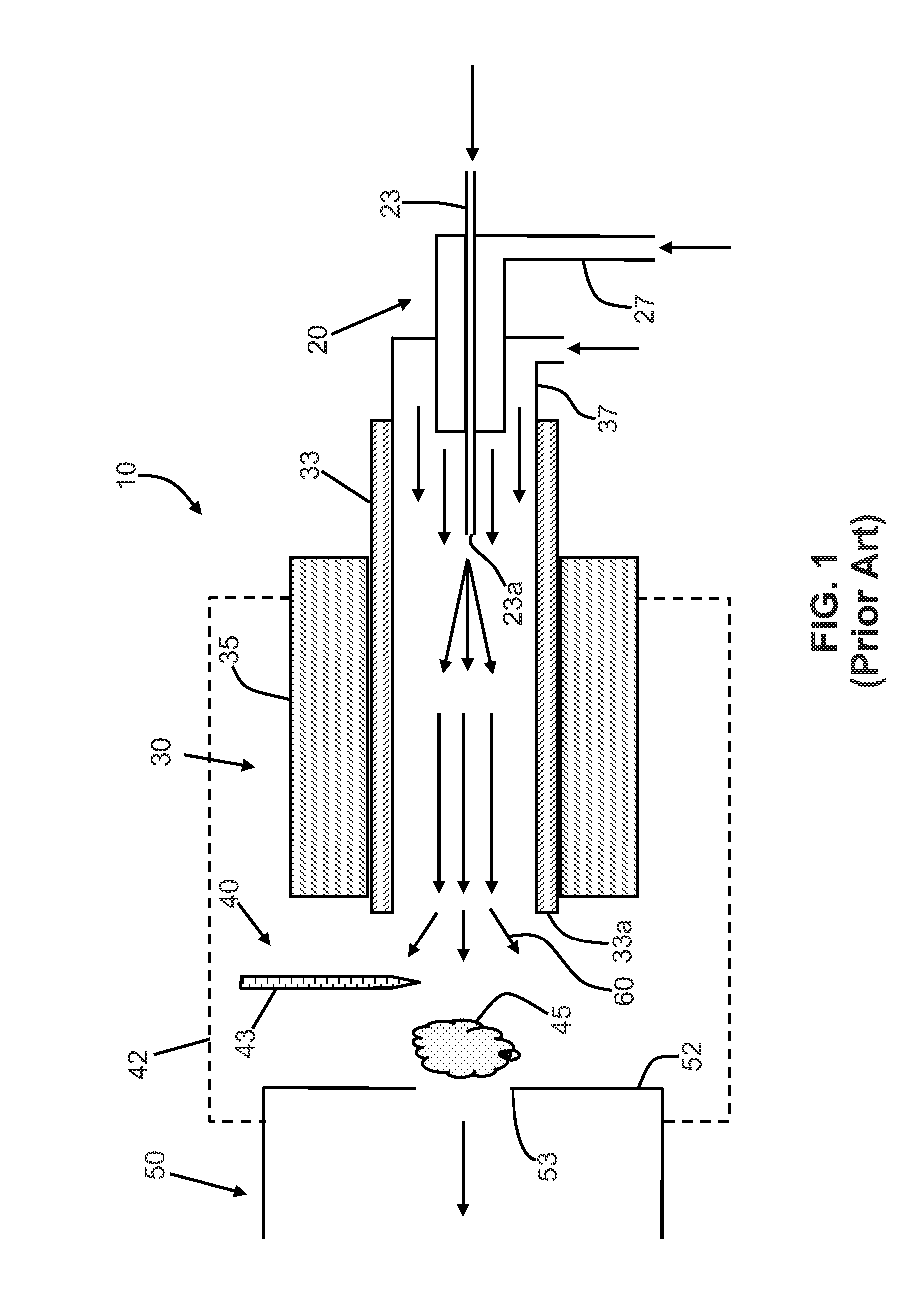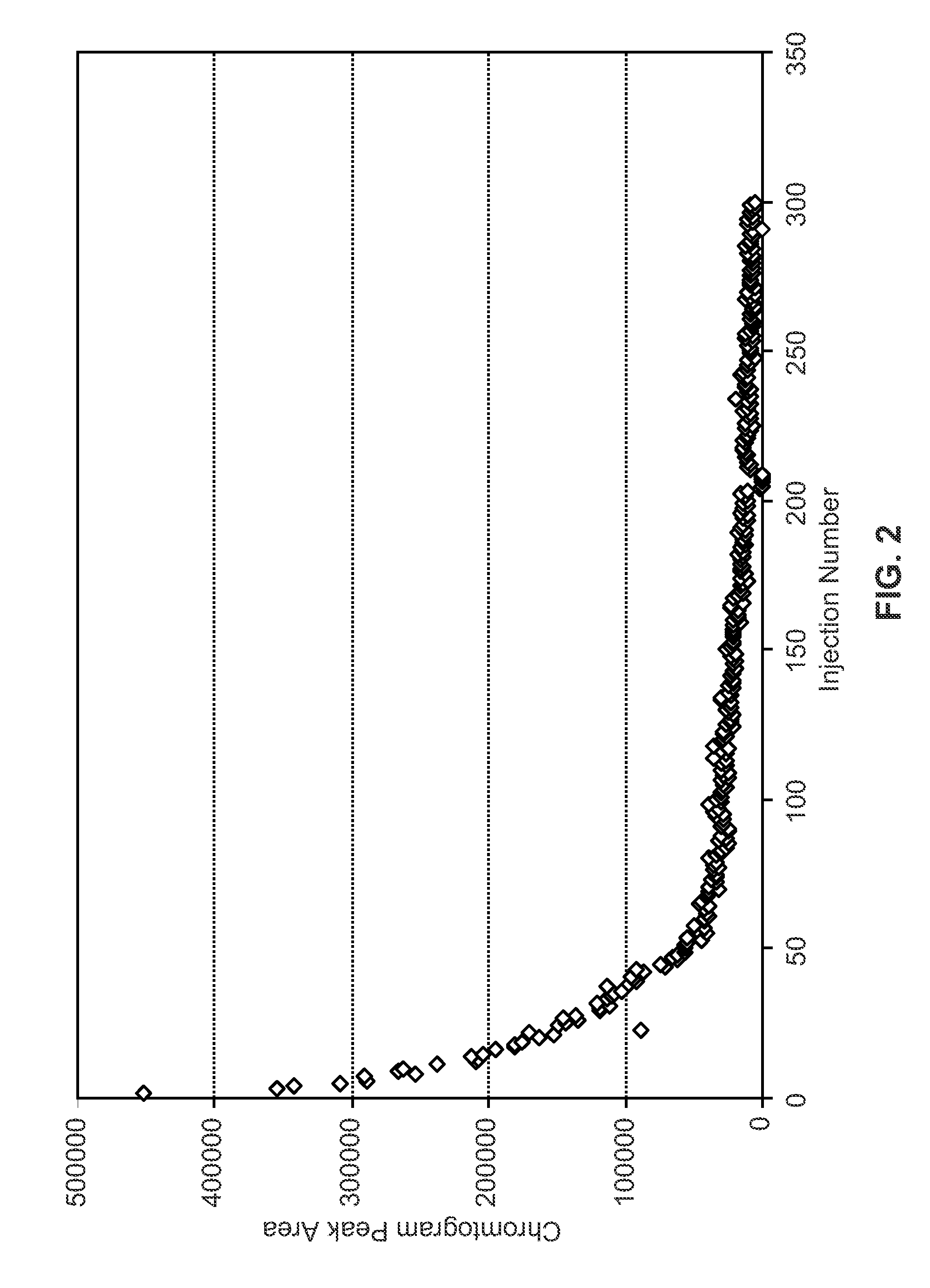Method for Cleaning an Atmospheric Pressure Chemical Ionization Source
a technology of atmospheric pressure and ionization source, which is applied in the direction of separation process, instrument, dispersed particle separation, etc., can solve the problems of affecting the performance of instruments, the interior surface of atmospheric pressure ionization source is especially prone to such contamination, and the technique is not compatible with very thermally labile molecules
- Summary
- Abstract
- Description
- Claims
- Application Information
AI Technical Summary
Benefits of technology
Problems solved by technology
Method used
Image
Examples
example 1
[0020]In order to verify the effectiveness of the APCI cleaning procedure described herein, a series of repeated LCMS analyses were performed on samples comprising 75 μL injections of cortisol-containing urine samples diluted with aqueous 5 mM ammonium acetate (AmAc) in a ratio of 1 part urine to 2.5 parts diluent. Each injected sample contained 150 ng / mL cortisol. The chromatography system included a first cleanup column comprising a High-Turbulence-Liquid Chromatography TurboFlow™“cleanup” column for removing a variety of non-analyte compounds and a reversed-phase Hypersil™ Gold C18 column for specifically separating cortisol from other compounds. Both such columns are available from Thermo Fisher Scientific of Waltham, Mass. USA.
[0021]The two mobile phases used for chromatography comprised pure water and pure methanol, respectively, without pH control or preservatives. Pure water was used to focus the analyte onto the analytical column; elution was performed using pure methanol. ...
example 2
[0024]Although the above-described set of experiments demonstrates the capability of the electrocleaning procedure (operating the APCI in negative polarity while flowing a mixture of solvents through the ion source) to improve instrument sensitivity, it does not address the loss of sensitivity after each injection, especially during the initial injections after installing a fresh or new APCI corona discharge needle electrode or APCI ion source system. Further, the cleaning procedure described above renders the analytical instrument inoperative while the cleaning is being performed.
[0025]To address these issues noted in the above paragraph, a second set of experiments was performed in which the electrocleaning procedure was incorporated into the assay method. In this second set of experiments, the APCI source operation was switched from positive to negative immediately after the cortisol measurement of each and every sample such that most contaminants are released from the APCI surfa...
PUM
| Property | Measurement | Unit |
|---|---|---|
| temperatures | aaaaa | aaaaa |
| pressure | aaaaa | aaaaa |
| flow rate | aaaaa | aaaaa |
Abstract
Description
Claims
Application Information
 Login to View More
Login to View More - R&D
- Intellectual Property
- Life Sciences
- Materials
- Tech Scout
- Unparalleled Data Quality
- Higher Quality Content
- 60% Fewer Hallucinations
Browse by: Latest US Patents, China's latest patents, Technical Efficacy Thesaurus, Application Domain, Technology Topic, Popular Technical Reports.
© 2025 PatSnap. All rights reserved.Legal|Privacy policy|Modern Slavery Act Transparency Statement|Sitemap|About US| Contact US: help@patsnap.com



